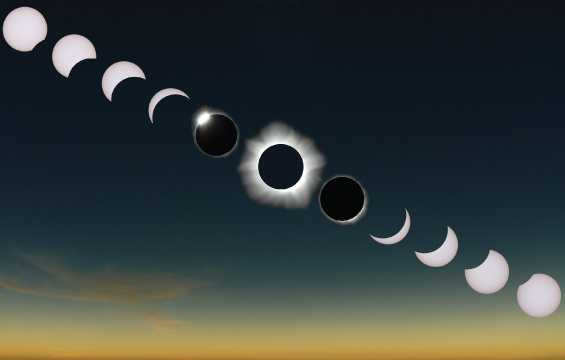What Is a Solar Eclipse?

Learn how total solar eclipses occur
Seeing a total solar eclipse from where you live is a rare experience.
Check out our video below to learn what causes eclipses and find out why everyone’s view of each eclipse is different.
Credit: Ontario Science Centre
The Moon cycles through phases as it orbits the Earth. When the Sun, Earth and Moon align, the Moon blocks the Sun, which casts a large shadow on Earth. This is known as an eclipse.
Credit: Royal Museums Greenwich
Your position on Earth determines what you see during an eclipse. If the Sun’s light appears entirely blocked by the Moon, you are standing in the path of totality.
Credit: National Geographic
Earth’s distance from the Sun, the Moon’s distance from Earth and the position of each (Sun, Moon and Earth) in its rotation all affect where the path of totality falls.
Credit: California Academy of Sciences
Explore more space science
Check out our exciting line-up of pre-eclipse events, IMAX® films and more when planning your next visit to the Science Centre!
Plus, learn how you can safely view solar eclipses from wherever you are in the world and watch our other videos to explore more eclipse science!
Top image photo credit: Rick Fienberg/TravelQuest International/Wilderness Travel